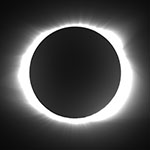

The output from that was then fed into a composite with more dirt layers added on top, plus monochrome versions created for reflections and bump. ( Editor’s note: a Corona MultiMap can be used to achieve a similar effect, and in Corona Renderer 1.7 and above, the UvwRandomizer can also randomize the way textures are mapped onto different instances). I used the Multitexture plug-in by CG Source which, if you have not used it before, I would highly recommend, as it allows you to randomise textures on elements of an object. I won’t go into much detail about the materials for this project as they are quite basic, but I thought I would include a screenshot of the wood decking from the exterior shots. If you bake the settings back into the scene once you’re happy with them and re-render, it will give you a much better, more accurate and crisp render.Īs you can see in the screen grab above, some of the lights have an extremely high intensity (I didn’t actually notice this until I started writing this breakdown and taking screenshots!), which is a result of transferring the LightMix settings back into the light settings.įor example, my sphere lights were very small and I had to increase their intensity a lot in the LightMix until I was happy with the look, and then baked the values back into my lights and continued without ever needing to look at the light settings directly again – hence the very high values.įinally, for the outdoor light bulbs and for the oven lights, I applied a Corona Light Material to the filament geometry with a basic falloff going from white to orange, giving the light a softer glow.īelow is a light breakdown of the various LightSelect elements for one of the images, so that you can see what each light is doing: The reason you use this is because for more extreme changes, particularly increasing the brightness of a light source, the more chance there is that it will create banding, noise, inaccurate reflections etc. In Corona 1.6 and above, there’s a function in the LightMix that allows you to change all your lights in the scene after the render using LightMix, and then bake those settings back into the actual scene lights once you’ve made those adjustments – just use the the >Scene button. The lighting set up I used is shown below: On a side note – if you accidentally press the “Reset settings” button in the Scene tab (which I did!) it will get rid of the Corona Output map as well, so to make life easier I add a zero at the beginning of the name so that it will turn up at the top of the scene material list and save me from scrolling through every material I made trying to find it!įor the interior lighting, I didn’t use any IES lights simply because I didn’t think it added anything to the look I was going for. This was added into the scene environment tab in a Corona Output map which allows you to make exposure/colour adjustments.
#SUN CORONA WITH HDR FREE#
I used the free Peter Guthrie HDR that comes with Corona, specifically “1347 Sun Clouds” that can be found in the Resources -> Materials section on the Corona website. To light this scene I started with an HDRI map. This project was something I created for these test purposes only and was not commercial in the slightest. However, about half a year ago I started to hear a lot about Corona Renderer, so in my spare time I decided to try it and see how it compared to V-Ray. I have used V-Ray for most of my career and when I moved into Architectural Visualisation three years ago, it was definitely the dominant render engine.

In this article, he takes us through his workflow, covering details such as lighting, depth of field, and more! Back in August 2017, Architectural Visualiser James Dowling released his Atmos.


 0 kommentar(er)
0 kommentar(er)
